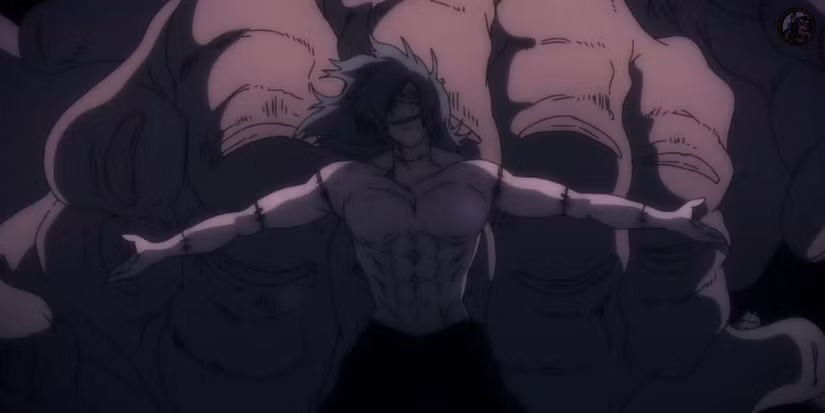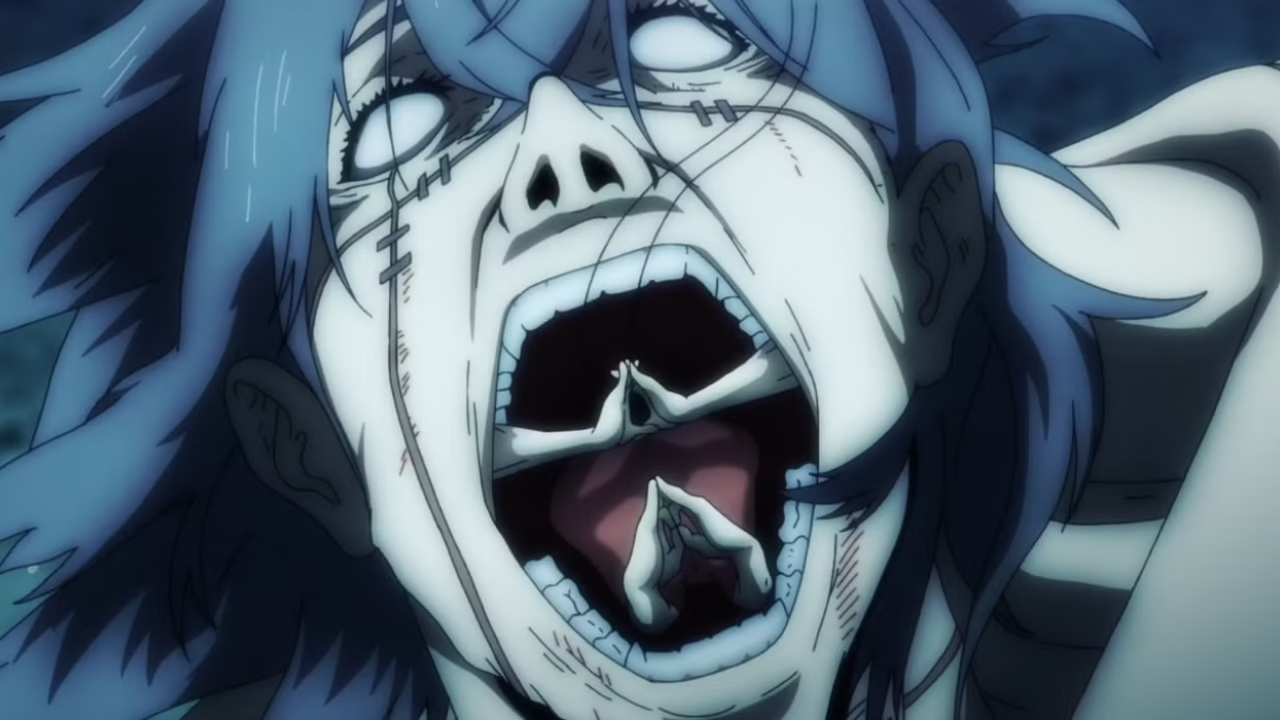In the dark and complex world of Jujutsu Kaisen, few antagonists inspire as much dread as Mahito. This special grade curse embodies humanity’s fear of humans themselves and wields one of the most horrifying abilities in the series, his mahito cursed technique known as Idle Transfiguration. This analysis explores how this devastating power works, its evolution throughout the series, and the twisted philosophy behind it.
What is Mahito’s Cursed Technique?
At its core, what is mahito cursed technique if not the ultimate violation of human existence? Idle Transfiguration allows Mahito to manipulate and reshape the soul of any being he touches. Unlike most cursed techniques that affect physical matter or energy, Mahito’s power targets something more fundamental that is the soul itself, which he describes as the blueprint for the body.
Mahito believes souls are malleable, just like clay. This philosophy stems from his nature as a curse born from humanity’s fear. He doesn’t view humans as special or sacred; to him, they’re simply objects that can be reshaped according to his whims. This perspective makes his technique particularly terrifying, as it represents a fundamental violation of selfhood.
When Mahito touches a target, he can instantly reshape their soul, which forces their body to follow suit. This can manifest as:
- Transforming humans into grotesque, deformed creatures
- Healing his own body by reshaping his soul
- Causing instant death by destroying the soul’s core
- Creating new “parts” that didn’t previously exist
The power works on the principle that the soul is the template for physical form. By altering this template, the physical form must adapt that is often with catastrophic results.
Mahito’s Cursed Technique Explained: Soul Manipulation Mastery

To truly understand the mahito cursed technique explained in full detail, we must examine how his ability manifests in combat and against others. Idle Transfiguration requires physical contact, making it seem limited initially. However, this limitation is offset by its absolute effect that is one touch can be fatal or worse.
Mahito’s power operates on two primary fronts:
Self-Manipulation
Mahito can reshape his own soul at will, allowing him to:
- Heal from seemingly fatal wounds by restructuring his soul
- Transform parts of his body into weapons
- Change his appearance entirely
- Extend parts of his body to unexpected lengths
This aspect of his mahito curse technique makes him nearly immortal in conventional combat. As long as his soul remains intact, he can recover from virtually any physical damage.
Manipulating Others
Far more horrifying is Mahito’s ability to transfigure others:
- He can instantly kill by destroying the soul’s core
- Transform humans into mindless, deformed curses under his control
- Cause partial transformations resulting in excruciating pain
- Alter specific body functions or parts
The case of Junpei Yoshino demonstrates this power’s cruelty. With a single touch, Mahito transformed the troubled teenager into a half-human, half-curse abomination, causing him unimaginable suffering before death. Each victim of his technique becomes not just a casualty but a walking testimony to his nihilistic worldview.
What makes the mahito curse technique truly terrifying is its irreversibility. Once a soul is transfigured, no known jujutsu technique can restore it to its original form that is also means the change is permanent.
Evolution of Mahito’s Power: Experience, Conflict, and Hatred
Mahito’s cursed technique demonstrates remarkable growth throughout the series. Like all curse users in Jujutsu Kaisen, his power evolves through conflict and experience, but his development occurs at an alarming rate.
When first introduced, Mahito already possesses considerable skill with Idle Transfiguration. However, his battles that are particularly against Yuji Itadori and Kento Nanami which force him to develop new applications of his technique.
The mahito jjk cursed technique reaches its apex with the development of his Domain Expansion: Self-Embodiment of Perfection. Inside this domain, Mahito can touch the soul of anyone within the boundary, eliminating the need for physical contact. This makes his already deadly ability virtually unavoidable.
His ultimate evolution comes in the form of “Instant Spirit Body of Distorted Killing.” This technique allows Mahito to create a clone of himself made from his soul. Both bodies can act independently yet share a single consciousness. This development represents a fundamental understanding of his own soul’s nature and extends the reach of his already formidable power.
Each evolution of Mahito’s technique stems directly from his battles with Yuji Itadori. The intense hatred he feels for Yuji who is the only human who can damage his soul through Sukuna’s connection which drives him to push the boundaries of his own ability.
Symbolism and Psychological Depth
Mahito’s cursed technique represents more than just a powerful ability but it embodies the series’ deeper themes about humanity, identity, and suffering.
As a curse born from humanity’s fear of other humans, Mahito’s ability to reshape souls mirrors how trauma and cruelty can fundamentally change a person. His casual disregard for human life reflects societal callousness, while his experiments with transfiguration represent the dehumanization that occurs in systemic violence.
What makes Mahito truly disturbing is not just his power, but his childlike curiosity about suffering. He approaches his victims with the innocence of a child pulling wings off insects, genuinely curious about the results. This perspective makes him a perfect philosophical foil to Yuji Itadori, who values the sanctity of life and proper death.
Mahito’s belief that souls are malleable challenges the very notion of fixed identity. If the soul that is the most fundamental aspect of self which can be reshaped like clay, what does that mean for concepts like personhood or individual worth? His technique forces both characters and viewers to question what makes a human being inherently valuable.
Conclusion
Mahito’s Idle Transfiguration stands as one of the most conceptually terrifying abilities in Jujutsu Kaisen. It’s not just the horrific physical transformations that make his technique frightening, but the philosophical implications of soul manipulation.
Through his cursed technique, Mahito challenges our understanding of identity, humanity, and the sanctity of life itself. His ability to reshape souls reflects the series’ broader themes about the malleability of human nature and the thin line between humans and monsters.
What makes Mahito such a compelling antagonist is how his power perfectly complements his character. Idle Transfiguration isn’t just what he does, it’s who he is that is a being born to question, challenge, and ultimately reshape humanity’s understanding of itself.
FAQs
-
What is Mahito’s cursed technique called in JJK?
Mahito’s cursed technique is called “Idle Transfiguration” (無為転変, Mui Tenpen). The name reflects the casual, almost lazy way he reshapes souls, suggesting that such profound transformation requires little effort from him.
-
How does Mahito’s Idle Transfiguration work?
Idle Transfiguration works by directly manipulating the soul of any being Mahito touches. Since the soul serves as the blueprint for the body, changing the soul forces corresponding changes in physical form. Mahito can reshape parts of the body, create new appendages, or destroy the soul’s core to cause instant death.
-
Can Mahito kill someone instantly with his technique?
Yes, Mahito can kill instantly by touching the part of the soul he calls the “core.” By damaging or reshaping this core, death is immediate. However, he often chooses not to kill instantly, preferring to experiment with transformations that cause suffering.
-
Why did Mahito hate humans so much?
Mahito didn’t exactly hate humans, he viewed them with fascination and curiosity rather than hatred. As a curse born from humanity’s fear of other humans, he lacked empathy for human suffering. He saw humans as interesting toys to be taken apart and reshaped rather than beings with inherent value.
-
What happens to Mahito in the end?
In the Shibuya Incident arc, Mahito is ultimately absorbed by Pseudo-Geto (Kenjaku) after being severely weakened in his final battle with Yuji. Kenjaku extracts Mahito’s technique, effectively ending his existence as an independent being. This fate is ironic that is the curse who treated souls as malleable objects ends up having his own essence absorbed and used by another.
Overall Rating: Mahito’s Cursed Technique
Overall Score: 9.2/10
Mahito’s Idle Transfiguration represents one of the most conceptually powerful and thematically rich abilities in modern anime. Its philosophical underpinnings, versatile applications, and profound impact on the narrative place it among the elite tier of supernatural powers in the medium.
Rating Breakdown
Power Level: 9.5/10
The ability to manipulate souls represents nearly unmatched potential. With a single touch, Mahito can kill, transform, or permanently alter any opponent. His Domain Expansion and Instant Spirit Body of Distorted Killing further amplify this already formidable power, making him a threat even to Special Grade sorcerers.
Uniqueness: 10/10
While other anime series feature characters who can transform opponents or manipulate bodies, Mahito’s specific focus on soul manipulation as the blueprint for physical form stands unique. The philosophical framework behind his technique adds depths rarely seen in supernatural abilities.
Visual Impact: 8.5/10
The grotesque transformations and body horror resulting from Idle Transfiguration create some of the series’ most visually disturbing moments. The anime’s unflinching portrayal of these transformations heightens the horror and impact of Mahito’s power.
Narrative Contribution: 9/10
Idle Transfiguration isn’t just powerful, it drives significant plot developments. Junpei’s transformation, Nanami’s struggles, and Yuji’s evolution as a character all stem directly from confrontations with this technique. The ability serves as more than just a weapon; it’s a catalyst for character growth.
Thematic Resonance: 9/10
Mahito’s technique perfectly embodies Jujutsu Kaisen’s themes about humanity, cruelty, and the value of life. The concept that souls can be reshaped like clay challenges fundamental assumptions about personhood and provides a perfect counterpoint to Yuji’s belief in the dignity of human life.
Villain Analysis: Mahito’s Impact on Jujutsu Kaisen
Villain Impact Score: 9.5/10
Mahito stands as one of the most effective antagonists in recent anime history. His childlike cruelty paired with philosophical depth creates a villain who is simultaneously repulsive and fascinating.
Character Depth: 10/10
Unlike many anime villains driven by simple motives, Mahito possesses a complex worldview that evolves throughout the series. His childlike curiosity about suffering and genuine belief in his philosophy about souls makes him disturbing yet compelling.
Cursed Technique Uniqueness: 9.5/10
Idle Transfiguration ranks among the most conceptually terrifying powers in the series. By targeting something as fundamental as the soul, Mahito’s ability challenges our basic understanding of identity and existence.
Narrative Impact: 9/10
Mahito serves as the perfect antithesis to Yuji Itadori’s worldview. While Yuji believes in the dignity of human life and proper death, Mahito embodies the perspective that humans are nothing more than malleable objects. This conflict drives much of the series’ philosophical depth.
What makes Mahito truly exceptional as a villain isn’t just his terrifying power or his sadistic tendencies but it’s how he forces both characters and viewers to question fundamental assumptions about humanity, identity, and the value of life. Few antagonists in anime leave such a lasting psychological impact.


Leave a Reply